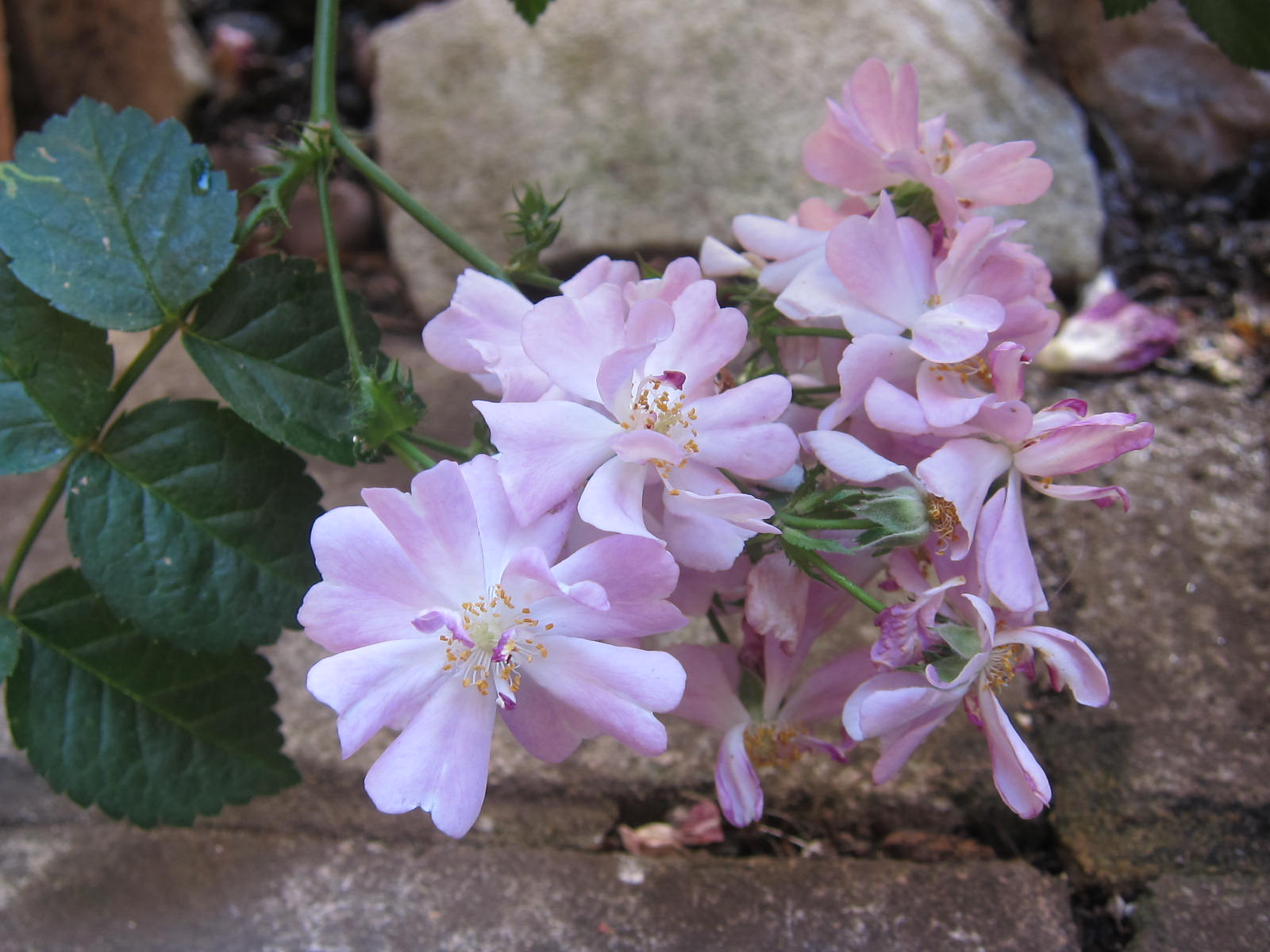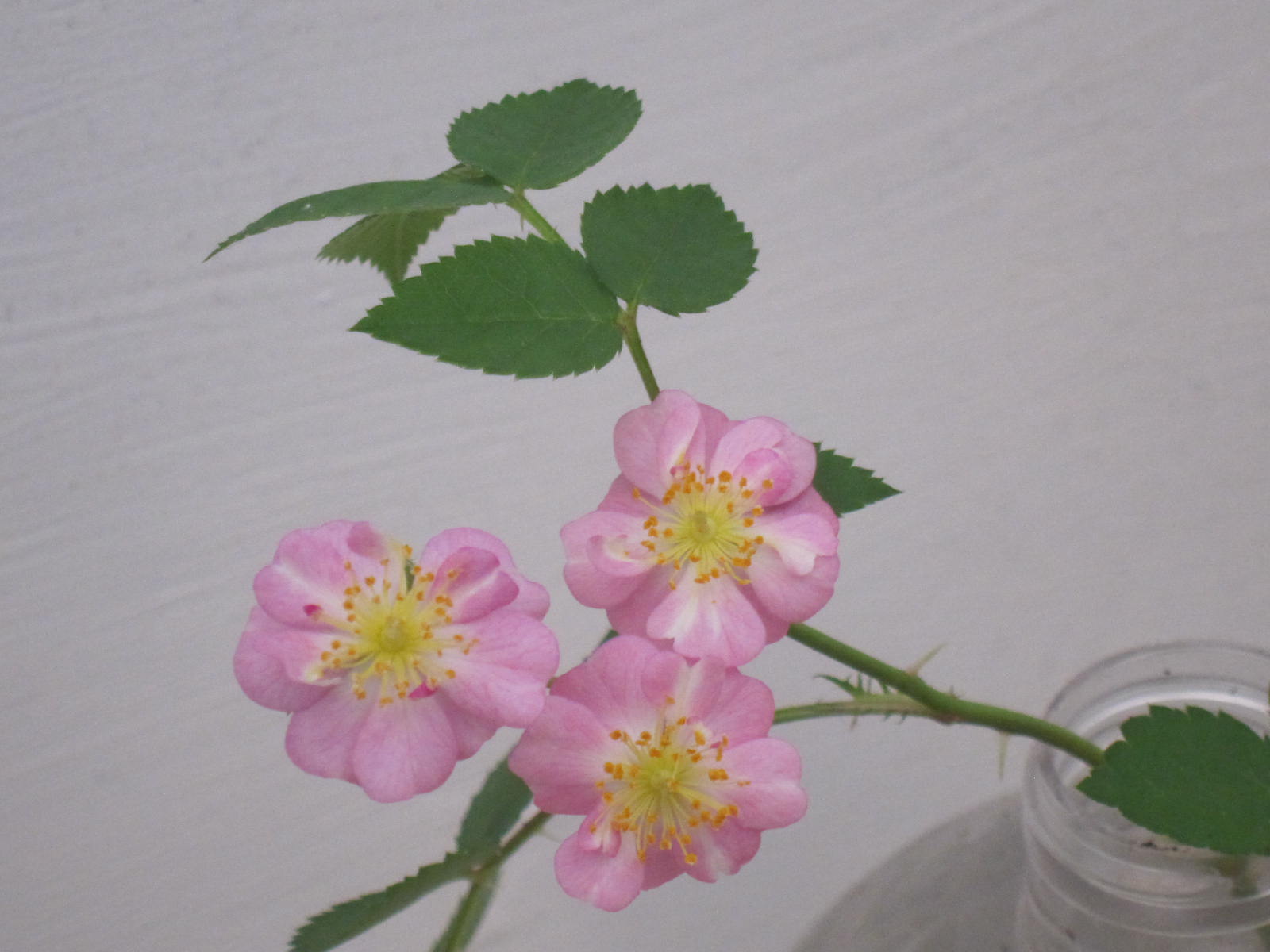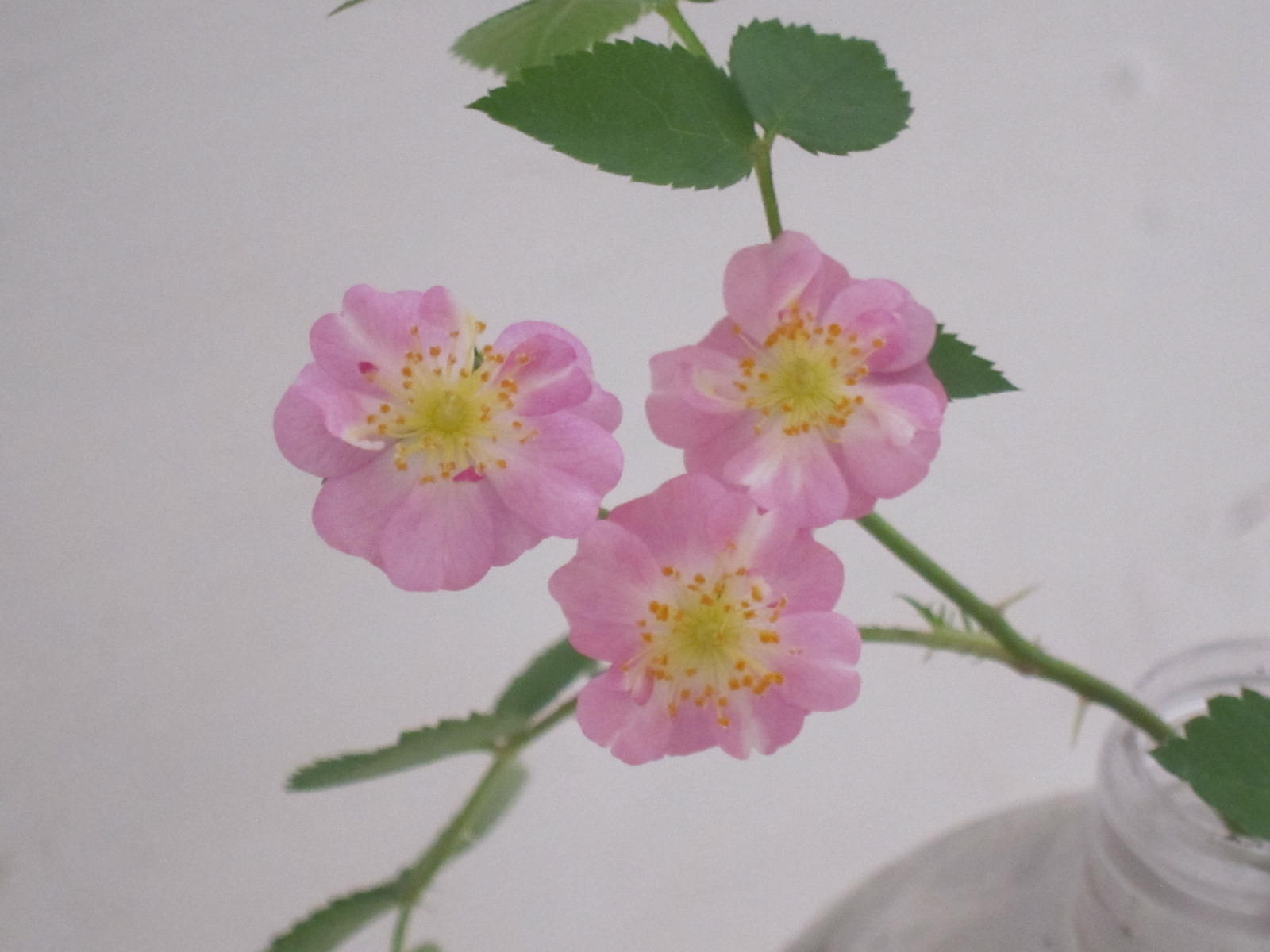These are some flowers that I grew from Roxburghii seeds. Are they supposed to have those bits that can’t decide if the are petals or stamens?

No, not at all! Did you collect that seed from R. roxburghii yourself? it appears to be heavily influenced by R. multiflora. There is no discernable R. roxburghii influence in that plant. (There are historical examples of roses supposedly being raised from R. roxburghii crosses that have no R. roxburghii features, like ‘Floradora’, so maybe there is just something odd about crossing with that species.)
No, like the above it looks more multiflora based.
The foliage is very wrong for roxburghii
I should have responded about the petaloid stamens (the structures you observe being between petals and stamens)–that is a common feature of many double flowers, since additional petals are generally caused by a mutation that converts them from stamens. Roses that are not completely double (which, generally, is most of them) will have at least some of these in-between structures that are usually called “petaloid stamens.”
If the R. roxburghii parent was single-petaled, this flower form would suggest that the pollen parent most likely had double or semi-double flowers. However, there is a common double-flowered form of R. roxburghii, which happens to be the form of the species that was first discovered and known to the West and was the basis for the species’ name. It is so double that I am not sure it produces even petaloid stamens–the conversion to petals may be more or less complete.
Thank you, that is very helpful information.
I grew two lots of bought seeds, one was Rosa Roxburghii and the other one was Rosa Chinensis Angel Wings. I am starting to wonder if I mixed them up by not labelling them properly and having to move pots around.
I suppose the real test is when they form hips, as Rosa Roxburghii has very distinctive hips.
Ah, that actually makes a lot more sense! The “Angel Wings” roses are not really Rosa chinensis as labeled, but rather, derived more clearly from R. multiflora with perhaps some R. chinensis influence that provides the repeat bloom.
R. roxburghii does usually have very unusual hips (spiny, yellow, and when ripe, having the distinct fragrance of ripe pineapple)–although there is a “spineless” form that is identical save for the absence of spines on the hips, rendering them much more ordinary looking. That form does have spiny stems, though, in case anyone else is fooled by the name like I was at first.
Stefan
Thanks for this information. There isn’t much information about Angel Wings online, other than a bit mostly from the sellers of its seeds. I did read in another thread on this forum that Angel Wings is related to multiflora.
All my other Angel Wings flowers from the seeds I bought are single, like little white or lilac stars, and some look more like small white wild roses. Unless one of those is the Roxburghii that I mixed up with them.
I think all of the flowers from those two packets of seeds that actually grew turned out to be Rosa Chinensis Angel Wings. They all have multiple tiny buds and tiny flowers, much more small and multiple than other roses.
I probably planted the Roxburghii seeds somewhere where they were lost, accidentally re-using their seed compost in something else and burying the seeds.
A lesson for me in labelling when I try to grow rose seeds again at the end of this summer.


